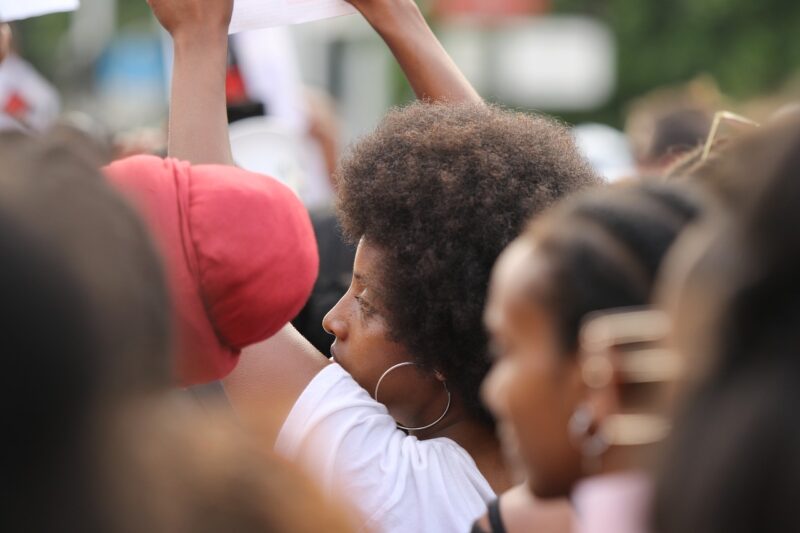The Astonishing Ways That Art and Music Have Been Used to Protest, Inspire, and Unify Movements
November 17, 2024

Art and music have long been powerful tools for expression and connection, serving as mediums through which people can convey their emotions, beliefs, and aspirations. Over the years, they have played pivotal roles in social and political movements, uniting individuals around shared values and encouraging collective action. From folk songs in protest marches to striking visual art in revolutionary movements, the intersection of art and social change is rich and multifaceted.
1. The Historical Context of Art and Music as Protest Tools
Throughout history, art and music have been harnessed as instruments of dissent and advocacy. They have the unique ability to encapsulate complex emotions and ideas into relatable forms. For instance, the Civil Rights Movement in the United States found its soundtrack in songs like “We Shall Overcome,” which inspired scores of activists to come together and fight for justice.
Visual art has also served as a powerful protest mechanism. The works of artists like Pablo Picasso, with his iconic painting “Guernica,” evoked the horrors of war and brought international attention to the atrocities of the Spanish Civil War.
2. Music as a Unifying Force
Music, in its various forms, has the capacity to transcend barriers—cultural, linguistic, and geographical. The 1960s saw the rise of protest music with musicians like Bob Dylan and Joan Baez spotlighting social issues such as civil rights and anti-war sentiments. These songs not only provided a sense of camaraderie among activists but also galvanized audiences into action.
Let’s explore a few significant music movements that have illuminated the power of songs in unifying people:
- 1. The Anti-Vietnam War Movement: Songs like “Fortunate Son” by Creedence Clearwater Revival became anthems, articulating the frustrations of a generation unwilling to bear the burdens of an unjust war.
- 2. The Reggae Movement: Bob Marley’s “One Love” transcended its reggae roots to become a universal call for peace and unity. Marley’s influence highlighted music’s capacity to promote social change while fostering collective identity.
- 3. Global Campaigns: Modern movements, such as the “Kony 2012” campaign, harnessed music and social media to unite global audiences against the atrocities committed by warlord Joseph Kony in Uganda, exemplifying how music can amplify social issues on a worldwide scale.
3. Art as a Catalyst for Change
Visual art has a profound ability to challenge societal norms, provoke thought, and incite change. Artists throughout history have used their medium to address issues ranging from poverty to gender inequality. Here are some notable examples:
- 1. Social Realism Movement: This art movement emerged in the early 20th century to highlight the plight of the working class. Artists like Diego Rivera painted murals that depicted the struggles and dignity of labor, influencing public consciousness about social issues in Mexico and beyond.
- 2. Guerrilla Girls: This anonymous group of feminist artists uses posters, stickers, and other forms of visual art to critique sexism and racism within the art world, adding a layer of activism to their artistic practices.
- 3. The AIDS Memorial Quilt: This massive collective art project has served as both a memorial and a means of activism, raising awareness about the AIDS epidemic while honoring those who lost their lives to the disease. It exemplifies how art can be both personal and political.
4. Case Studies: Iconic Protests Empowered by Art and Music
Examining specific instances in history offers deeper insights into how art and music have played essential roles in social movements:
The Civil Rights Movement
Art and music were pivotal during the Civil Rights Movement, with folk music as a central force in rallies and gatherings. Songs like “Freedom Songs” tapped into African American cultural traditions, resonating deeply within the community while drawing support from allies. The visuals of protest signs adorned with art echoed these sentiments, enriching the movement’s narrative.
The Women’s March
In 2017, millions gathered in various cities worldwide for the Women’s March, advocating for women’s rights and social justice. Signage, banners, and visual art became iconic symbols of the movement. The power of music was felt through performances by artists like Madonna, who used the platform to elevate marginalized voices and underscore the urgency of the cause.
Global Environmental Movements
Art is becoming integral in raising awareness about climate change. The works of artists like Olafur Eliasson and Banksy showcase environmental issues, inspiring activism through visual storytelling. Music festivals like “Earth Day” unite artists and activists, using performances to spread the message of sustainability and conservation.
5. The Future of Art and Music in Activism
As we navigate a rapidly changing world, the role of art and music in activism continues to evolve. From digital art forms to social media movements, the landscape is transforming:
- Digital Activism: With the rise of social media, artists and musicians utilize platforms like Instagram and TikTok to engage audiences in social causes, combining art with hashtags to amplify messages quickly and broadly.
- Inclusive Collaboration: Collaborative art initiatives, like those from artist Ai Weiwei, show how cross-cultural partnerships make impactful statements around global issues, fostering a sense of solidarity in activism.
- Sustainability in Art and Music: The growing awareness of ecological issues encourages artists to create sustainably, integrating themes of environmentalism into their work, thereby linking the arts with climate action for future generations.
Conclusion
The interconnectedness of art, music, and social movements is a testament to the resilience of the human spirit. Throughout history, artists and musicians have invoked change, stirred public sentiment, and united diverse communities to fight for progress. In the face of adversity, art and music endure as catalysts for collective action, forging connections that transcend individual experiences. As we look to the future, the role of creative expression in activism will undoubtedly remain powerful and essential.
By appreciating the remarkable ways in which art and music shape movements, we become aware of our own potential to inspire change in our world, ensuring that the voices raised through creative expression continue to resonate for generations to come.







